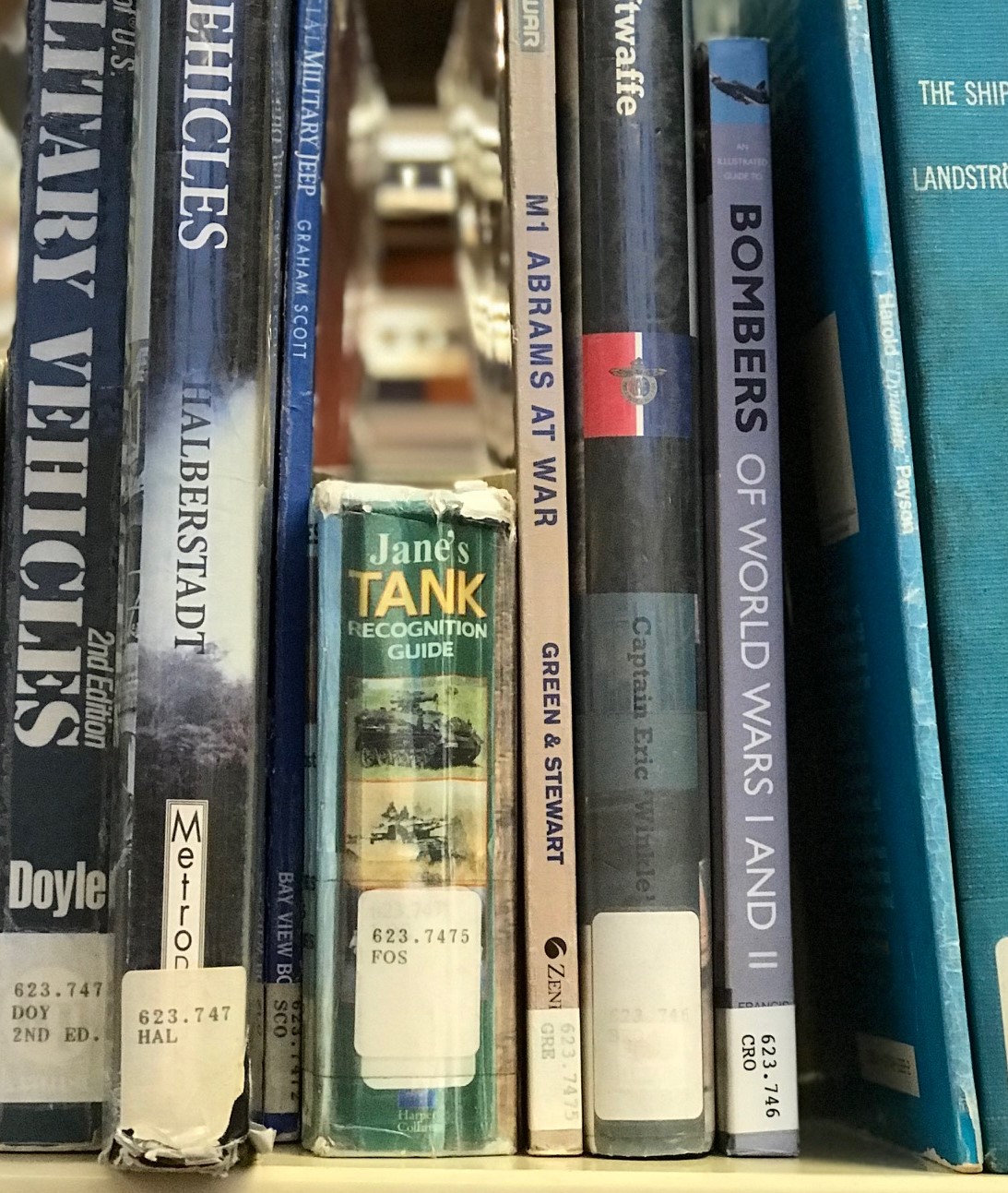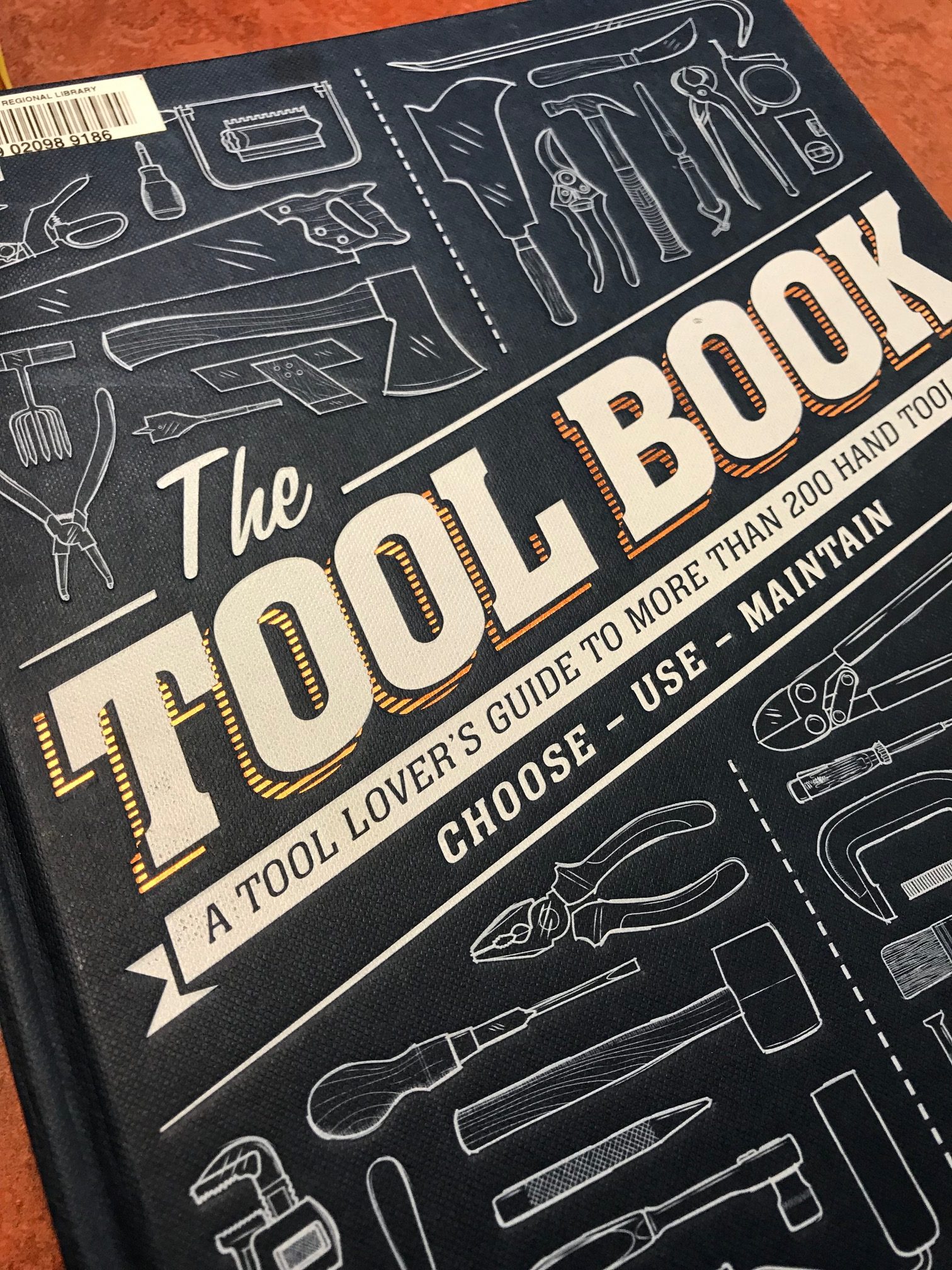
I’m not a shelver, but occasionally I get to do a bit of shelving or something similar. I like it. Some people don’t, and that’s okay. But I love the passage of books through my hands, books that I might not otherwise ever know.
Today’s finds include: “Jane’s Tank and Combat Vehicle Recognition Guide.” Who is Jane? I snapped a photo and sent it to my husband. It’s tempting to take this one home to him (he’s convalescing after a minor, but painful, surgery). I particularly admire the odd, tank-like size and shape of this one (especially compared to its neighbors), a short but thick spine and a long width, almost twice as wide as it’s tall. It’s well-loved, battered even. This book has been thumbed through many, many times, carried in school bags, and who knows what else. It specifically reminds me of a family friend of ours, who as a tween and teen (probably even still) eagerly devoured this sort of information — these might have been the only books he ever picked up.

Also for my husband: “The Tool Book: A Tool Lover’s Guide to More Than 200 Hand Tools,” with a foreword by Nick Offerman. Again I was grabbed by the appearance of this book which matches its subject matter. Simple line drawings of tools stand out as white ink on a navy blue linen cover. My husband is not a particular fan of tanks or hand tools, but I think these books would still catch his eye. And that’s the beauty of shelving, would he, or I, otherwise search these books out? Most likely, no, but I get some joy from seeing them, briefly dreaming of the possibilities within them, the organized shelves of tools and wisdom of simple mechanical ingenuity, or a far-off teenager’s delight contemplating the destructive capabilities of war machines.
As I shelved a couple books in “the epilepsy” section of non-fiction. I was struck by the size of this section, although I really shouldn’t be, and I had a moment of empathy to wonder if someone had recently been faced with the challenges presented by this neurologic condition and turned to these books for help. It occurred to me that I might never read a book about epilepsy unless something in my life led me to it. But isn’t that how life is? There is so much you don’t know about until you find you need to know about it.
I refrained from pulling an epilepsy book to read now. As a natural-born, life-long science geek (particularly for anything biological), the subject is of interest to me, and I know people who live with epilepsy — it would be nice to know more about it. But for now, two other books were more compelling.
“How to Eat in the Woods,” by Bradford Angier with a well-worn textured brown cover with chartreuse block text and a simple graphic, inspired a spontaneous New Year’s Resolution: make one wild meal per month in 2023. I’ve already recruited a co-conspirator. I normally don’t make resolutions; the cover of this book really spoke to something in me.
And finally, “How to be Everything: A Guide for Those Who (Still) Don’t Know What they Want to be When They Grow Up,” by Emilie Wapnick. I’m always looking for something to help validate my wayward tendencies and professional meandering. There are just so many interesting people, places, subjects and endeavors. So far I’ve patrolled ski slopes in Colorado, minded cattle in the same mountains, worked at a plant nursery, taught high school biology, been a community organizer, earned two different master’s degrees, a few other odds and ends and worked at a library — not to mention my avocations of equestrian, lover of dogs, and amateur naturalist (birder, botanist, tracker, ecologist). My two favorite jobs have been ranch hand and working here at the Columbia Public Library. Maybe the library will be my last stop simply because it seems to be the nexus of all possibilities, and (nearly) all of its resources are free.


